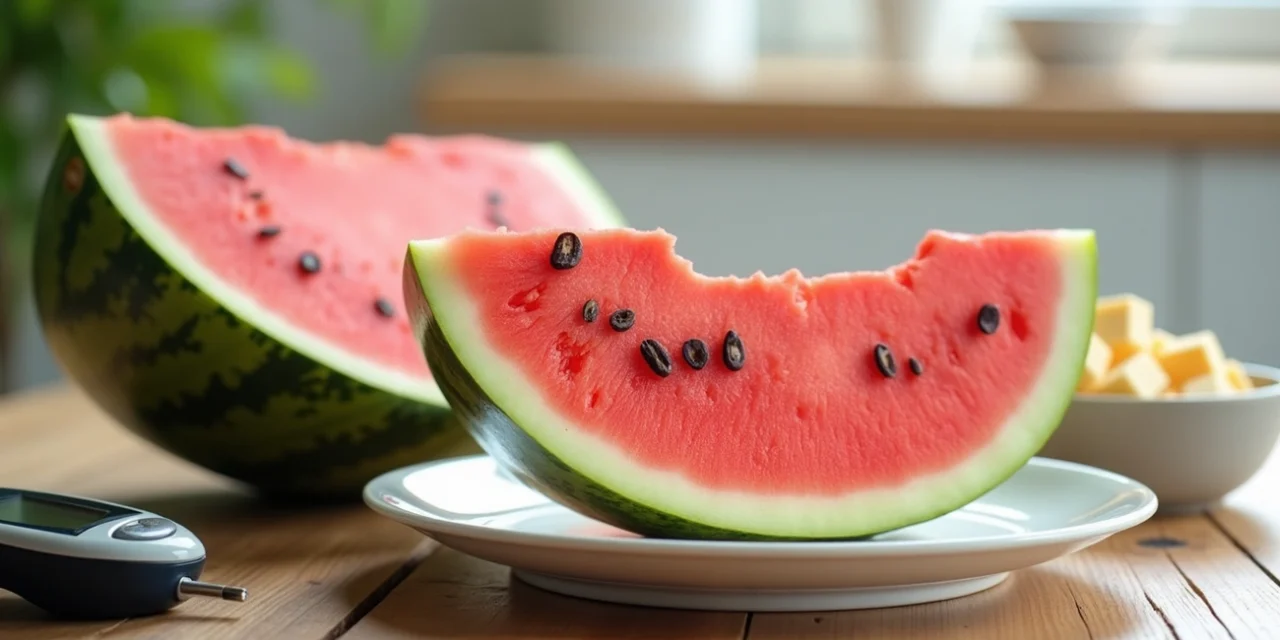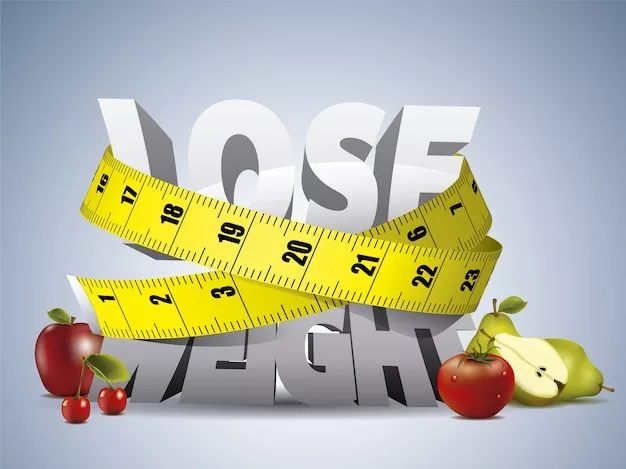People with diabetes often ask about watermelon’s safety, especially during summer when this refreshing fruit becomes a popular choice. The fruit has a high glycemic index (GI) of between 72-80, yet its glycemic load (GL) sits at just 5 per 120-gram serving[-4]. This difference matters a lot to people who monitor their blood sugar levels.
Watermelon’s benefits go well beyond its sugar content. A single wedge delivers about 30% of a woman’s recommended daily vitamin C intake and 22% of a man’s requirements. The fruit packs quite a punch nutritionally. One cup of diced watermelon has only 45 calories and contains 6890 μg of lycopene, which serves as a potent antioxidant. A medium slice contains 17.7g of sugar, but research hints at possible improvements in blood sugar levels and insulin sensitivity. Let’s dive into watermelon’s relationship with diabetes to help you decide if this summer fruit deserves a place in your diet.
How is watermelon good for diabetes?
Sweet fruits like watermelon make many diabetics wonder if they can include them in their diet. Let’s get into whether this summer favorite works with a diabetes-friendly eating plan.
Why people with diabetes ask this question:
Food choices directly affect blood sugar levels for people managing diabetes. Watermelon’s sweet taste and its reputation as a high-sugar fruit raise concerns. Diabetics need to watch their carbohydrate intake carefully, which makes fruits with natural sugars confusing. The refreshing, sweet nature of watermelon becomes especially tempting in hot weather—right when you might worry about disrupting your careful blood sugar management.
What makes watermelon a concern
Watermelon’s glycemic index (GI) rating of approximately 72-80 puts it in the “high” category. These numbers suggest it might raise blood glucose quickly. The complete story tells us something different. A cup of diced watermelon contains just 11 grams of carbohydrates. Its high water content (91%) results in a low glycemic load (GL) of around 5 per 120-gram serving.
Moderate portions won’t likely cause problematic blood sugar spikes because of this unique combination of high GI but low GL. Sara Chatfield, RDN, explains, “While watermelon typically has a sweet taste, it’s actually lower in sugar than many popular fruits due to its high water content”.
How natural sugars differ from added sugars
Your body processes different types of sugar differently. Watermelon’s natural sugars come with fiber, vitamins, and other nutrients that slow digestion and absorption. Added sugars in processed foods lack nutritional benefits and can spike blood sugar rapidly.
Studies show that eating whole fruits like watermelon doesn’t associate with poor health outcomes. Too much added sugar increases risk for obesity, inflammation, and type 2 diabetes.
The American Diabetes Association confirms that fresh, whole, unprocessed fruit fits well into a diabetes-friendly diet when eaten in moderation. Notwithstanding that, pairing watermelon with protein or healthy fats can minimize its effects on blood sugar even further.
Understanding glycemic index and glycemic load
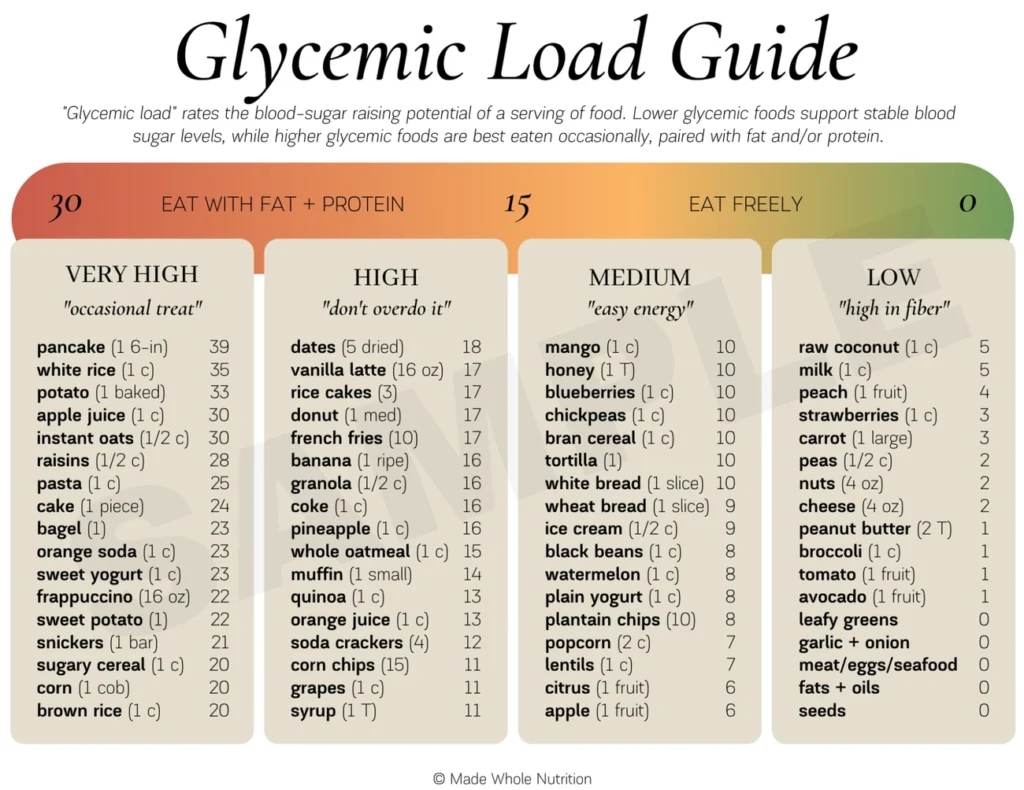
Blood sugar effects of watermelon can be best understood by looking at two key metrics.
What is glycemic index (GI)?
The glycemic index ranks carbohydrate-containing foods on a scale of 0-100. This ranking shows how quickly foods raise blood glucose levels compared to pure glucose (which has a GI of 100). Foods fall into three categories:
- Low GI: 55 or less
- Medium GI: 56-69
- High GI: 70 or above
Processed foods tend to have higher GIs. Foods rich in fiber or fat usually have lower GIs. To name just one example, see boiled white potato with an average GI of 82, while cooked brown rice has an average GI of 50.
What is glycemic load (GL)?
GI only measures carbohydrate quality, but glycemic load takes both quality and quantity into account. You get the GL by multiplying the food’s GI by available carbohydrates in grams, then dividing by 100. This gives us a better picture of how food affects blood sugar levels.
GL ratings come in three levels:
- Low GL: 10 or less
- Medium GL: 11-19
- High GL: 20 or above
Each unit of glycemic load roughly equals the effect of eating one gram of glucose.
Watermelon’s GI vs GL explained
Studies show watermelon’s GI ranges from 50-80. But whatever value we use, watermelon’s GL tells us more.
A typical 120g serving (about two slices) of watermelon has a GL of just 5-6. This puts it squarely in the “low” category[92]. Double the portion to 240g and the GL only reaches 9-13, which stays in the low to medium range. This big difference between GI and GL happens because watermelon has very few carbohydrates and lots of water.
Why GL matters more than GI for diabetics
GL gives people with diabetes substantially more useful information than GI alone. GL shows both how fast glucose enters the bloodstream and how much each serving delivers. This creates a more accurate picture of food’s real-life effect.
Nutrition experts suggest people with diabetes should track both metrics, but they emphasize GL for better blood sugar control. Eating low-GL foods helps avoid long blood sugar spikes that might increase diabetes risk.
The answer to “is watermelon good for diabetics” becomes much clearer when we look at its GL rather than just its GI.
Nutritional benefits of watermelon
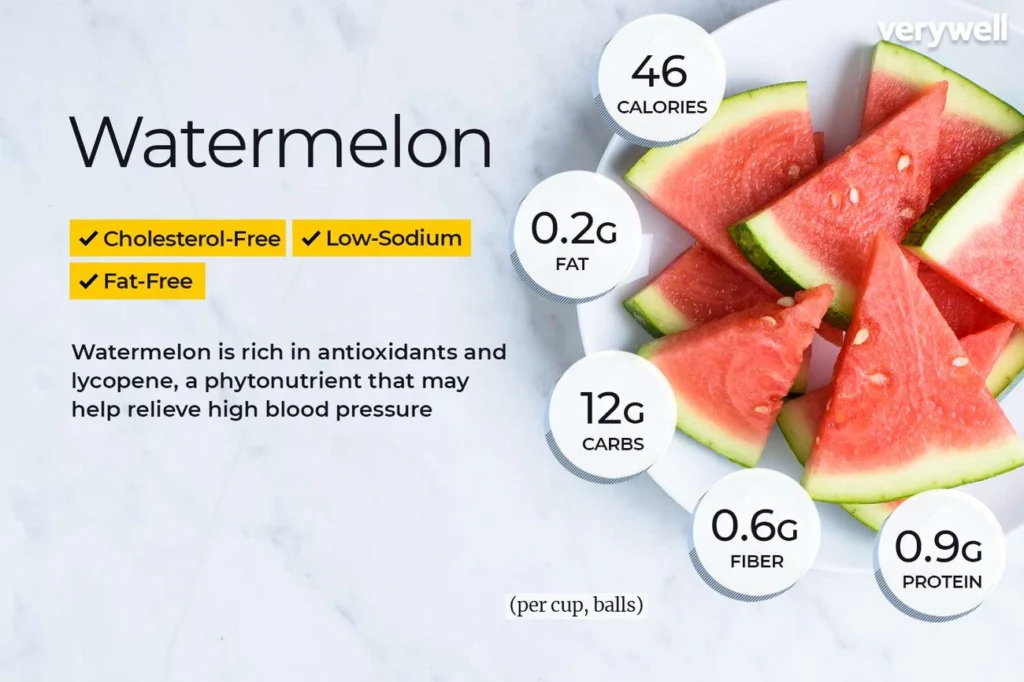
Watermelon packs an impressive nutritional profile with a low glycemic load that can benefit people with diabetes.
Hydration and water content
Watermelon lives up to its name with a remarkable 92% water content. This fruit serves as an excellent hydration source, especially during hot weather. The high water content makes it a light yet satisfying snack due to its low calorie density.
Vitamins A and C
A cup of watermelon delivers 25% of your daily vitamin C requirements and 8% of vitamin A. These essential nutrients help your immune system, skin health, and vision – crucial areas that diabetes-related complications often affect.
Lycopene and antioxidant properties
Watermelon stands out as the richest source of lycopene among fresh fruits and vegetables. A 2-cup serving contains approximately 12.7 mg of this powerful antioxidant. Lycopene helps reduce inflammation and could lower your risk of various diseases, including heart disease.
Citrulline and heart health
This refreshing fruit ranks among nature’s richest sources of citrulline, an amino acid that boosts blood vessel dilation and blood flow. Research shows that eating watermelon improves vascular function. This benefit becomes crucial for diabetes management since cardiovascular health often needs extra attention.
Low calorie and fiber content
Each cup of watermelon contains just 46 calories while delivering substantial nutrition. The fruit provides about 0.6 grams of fiber per cup, and its combination of water and nutrients helps maintain healthy digestion.
How to eat watermelon safely with diabetes
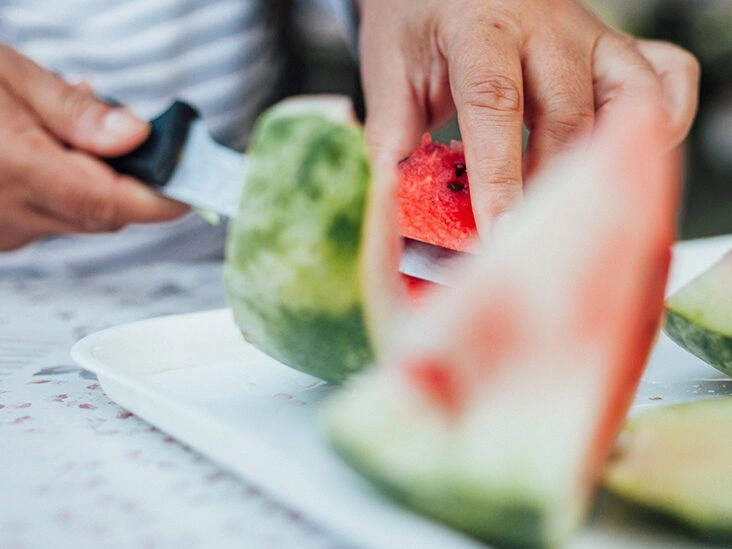
People with diabetes can safely enjoy watermelon by paying attention to portion size, timing, and food combinations.
Recommended portion sizes
The right portion size plays a vital role in managing blood sugar. You should eat about 1/2 to 1 cup of diced watermelon or one small wedge per serving. This serving has about 11 grams of carbohydrates. This amount will give you hydration and nutrients without adding too much sugar to your system.
Best times to eat watermelon
Mornings and afternoons are ideal times to enjoy watermelon. Physical activity helps your body process carbohydrates better, so eating watermelon during or after exercise works well. You should skip eating it at night because its high water and sugar content might make you feel bloated or disrupt your sleep.
Pairing with protein or fat
Your blood sugar won’t spike as much if you eat watermelon with protein or healthy fats. These food combinations help slow down sugar absorption:
- Greek yogurt or cottage cheese
- A small handful of nuts or seeds
- Cheese like feta, mozzarella, or goat cheese
- Fresh avocado
Avoiding watermelon juice and dried forms
Whole watermelon is better than juice. Juicing removes fiber, and sugar enters your bloodstream faster. You should also limit canned or dried watermelon that contains added syrups.
Monitoring blood sugar after eating
Check your glucose levels after eating watermelon to see how your body reacts. This information helps you figure out if your portion size works for your needs. Regular monitoring lets you include this healthy fruit in your diabetes management plan safely.
Conclusion
Watermelon can be a healthy addition to your diabetes-friendly diet, even though many consider it a high-sugar fruit. The high glycemic index might worry you at first. But the low glycemic load gives you a better picture of how it affects your blood sugar when you eat the right amount.
This refreshing fruit packs some amazing health benefits. You get plenty of vitamins A and C in every bite. Watermelon has more lycopene than any other fresh produce. Your cardiovascular health improves from its citrulline content. These benefits are especially valuable when you have diabetes.
Smart eating habits are the key to enjoying watermelon safely. Keep your portions to one cup or less. Eat it earlier in the day or after you exercise. You can pair it with protein or healthy fats to help control blood sugar changes. The fiber in whole watermelon helps slow down sugar absorption, so it’s better than juice or processed forms.
Your body’s response to watermelon is what matters most. Many diabetics can add this hydrating summer fruit to their meals without seeing big spikes in blood sugar. You can tap into the full potential of watermelon’s taste and nutrition by watching your portions and timing. This approach helps you keep your glucose levels stable as you manage your diabetes.
FAQs
Q1. Can people with diabetes safely eat watermelon?
Yes, people with diabetes can enjoy watermelon in moderation. Despite its high glycemic index, watermelon has a low glycemic load due to its high water content. A serving of 1/2 to 1 cup of diced watermelon is generally safe and provides valuable nutrients without causing significant blood sugar spikes.
Q2. What are the nutritional benefits of watermelon for diabetics?
Watermelon offers several nutritional benefits for people with diabetes. It’s rich in vitamins A and C, which support immune function and skin health. It also contains lycopene, a powerful antioxidant, and citrulline, which may improve cardiovascular health. Additionally, its high water content aids in hydration.
Q3. How can diabetics incorporate watermelon into their diet safely?
Diabetics can safely enjoy watermelon by controlling portion sizes (1/2 to 1 cup), eating it earlier in the day or after exercise, and pairing it with protein or healthy fats to slow sugar absorption. It’s also important to monitor blood sugar levels after consumption to understand individual responses.
Q4. Is watermelon juice a good option for people with diabetes?
Whole watermelon is a better choice than watermelon juice for people with diabetes. Juicing removes the fiber content, causing the sugar to enter the bloodstream more rapidly. Stick to eating fresh, whole watermelon in moderate portions for better blood sugar management.
Q5. How does watermelon’s glycemic index compare to its glycemic load?
While watermelon has a high glycemic index (GI) of 72-80, its glycemic load (GL) is surprisingly low at about 5 per 120-gram serving. The GL is a more accurate measure of how a food affects blood sugar levels, as it takes into account both the quality and quantity of carbohydrates. This makes watermelon a better choice for diabetics than its high GI might suggest.

